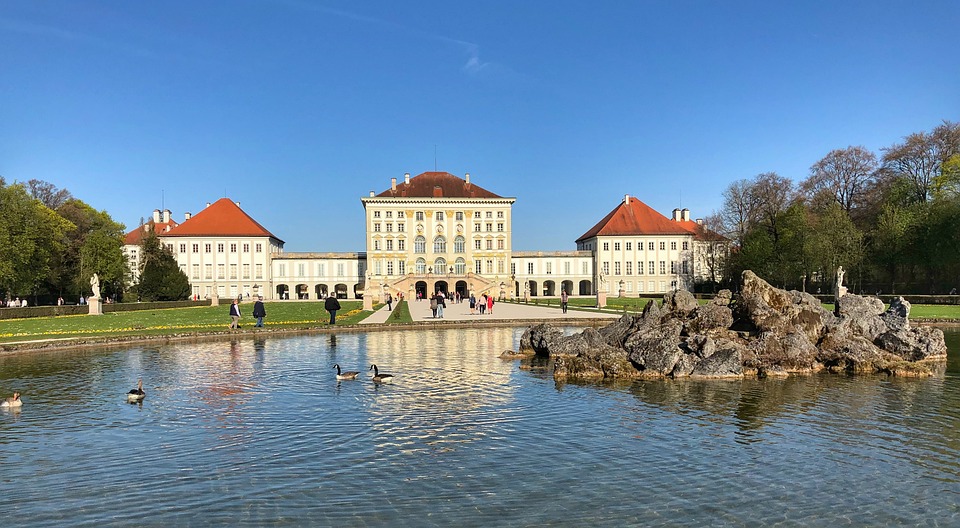Combined with the adjacent Nymphenburg Palace Park it constitutes one of the premier royal palaces of Europe. Its frontal width of 632 m (north–south axis) even surpasses Versailles Palace.
The Nymphenburg served as the main summer residence for the former rulers of Bavaria of the House of Wittelsbach.
History
Building history
The palace was commissioned by the electoral couple Ferdinand Maria and Henriette Adelaide of Savoy to the designs of the Italian architect Agostino Barelli in 1664 after the birth of their son Maximilian II Emanuel. The central pavilion was completed in 1675. As a building material, it utilised limestone from Kelheim. The palace was gradually expanded and transformed over the years.
It then quickly replaced the nearby Blutenburg Castle as major hunting lodge of the court and competed to Schleissheim Palace.
Residence
With the Treaty of Nymphenburg signed in July 1741, Charles Albert allied with France and Spain against Austria. Two of his children were born here: Maria Antonia in 1724 and Maria Anna Josepha in 1734. Charles Albert lived during his time in Munich as Holy Roman Emperor at Nymphenburg Palace and died there in 1745. In 1747, Elector Max III. Joseph founded the Nymphenburg Porcelain Manufactory. In 1792, Elector Charles Theodor opened the park for the public.
Palace
The palace, together with its park, is now one of the most famous sights of Munich. The baroque facades comprise an overall width of about 700 metres. Some rooms still show their original baroque decoration while others were later redesigned in rococo or neoclassical style.


